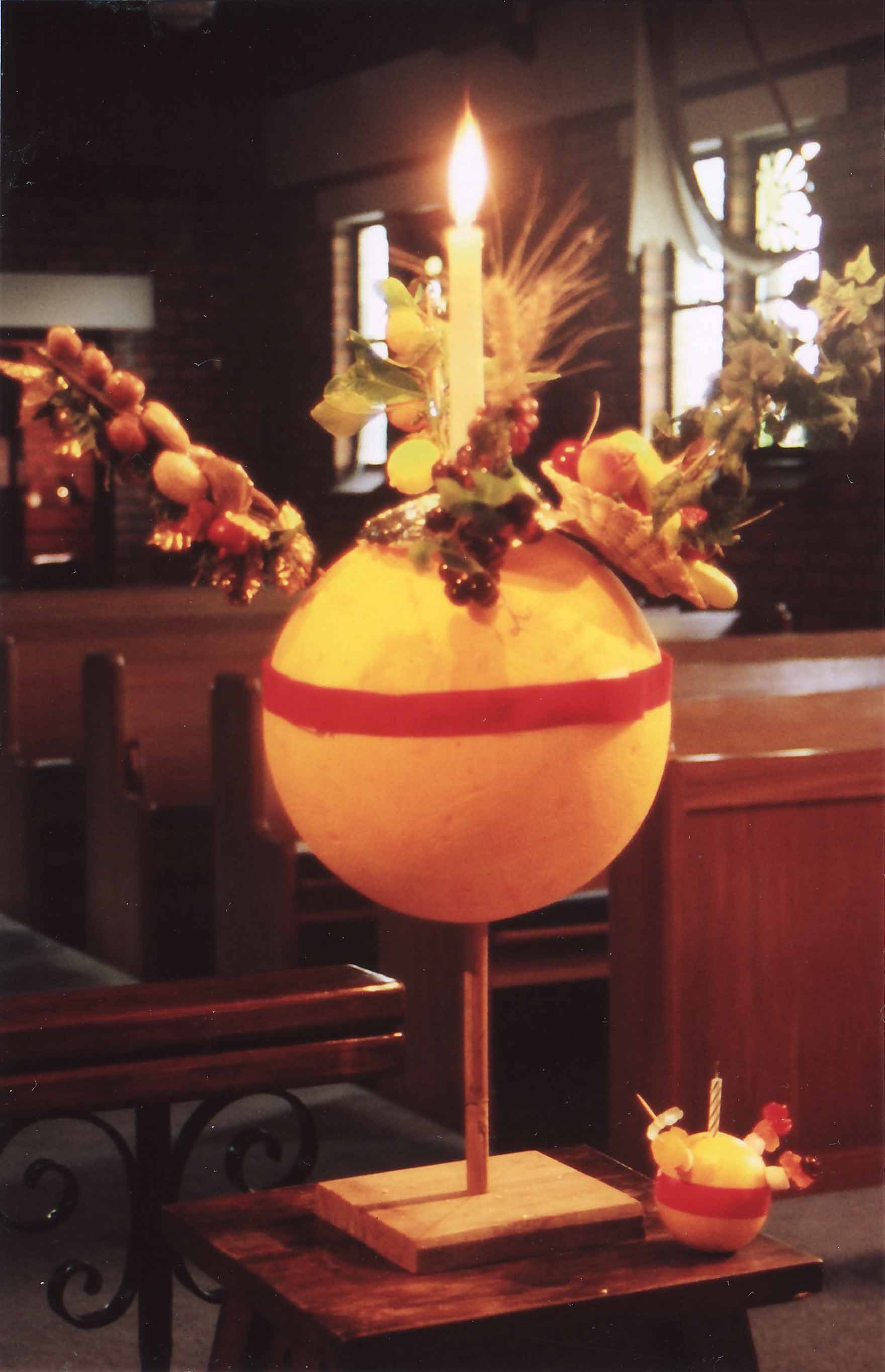St. Augustine's Family Services
PROPERTIES
Our CHRISTINGLE - demonstration model.
After running our Christingle services for a couple of years, it became clear that our attempts to demonstrate ( for example ) the construction of the Christingle using a real orange were less than successful, simply because the orange was too small to be seen for the majority of the congregation.
We therefore constructed a big one. This has been far more satisfactory as a demonstration, and has proved durable. It's also quite easy to construct. This is how
- Take a polystyrene foam sphere. Ours is about 30cm diameter, but there's nothing critical about it. ( Finding the sphere was perhaps the hardest task in the construction ! )
- Drill holes in the sphere to accommodate the candle, "arms", and support ( see below ). In all cases, they should fit loosely to their eventual contents, but be deep enough to ensure that the attachment are reasonably securely attached without serious wobbling. When deciding on the bore of the holes, take into account the lining.
- Line each of the holes with some fairly tough coating. Polystyrene foam is fairly fragile, and people trying to attach bits and pieces during the performance can easily be flustered. It should therefore be very easy to make the attachment, in such a way that the polystyrene isn't damaged. To hold the "arms", we used plastic drinking straws which would comfortably fit the sticks used for the arms. We used an aluminium tube for the support hole, and a short steel tube for the candle ( more because we happened to have them available than for any deeper reason ).
- Make some provision for attaching the red ribbon round the horizontal diameter, and ensuring that it doesn't fall off. We glued four small scraps of velcro to the "orange" and sewed corresponding scraps of velcro to the ribbon. It works very well.
- Paint the sphere, and the velcro pieces, orange.
- Find a flat base for the stand, and a wooden dowel ( ours is bamboo ) for the upright. The base should be big enough to ensure stability when the "orange" is in position, and the upright should be long enough to raise the "orange" clearly above the base.
- Bore a hole through the base which will precisely fit the dowel, and mount it. The joint should be rigid to reasonably gentle use.
- Make the "arms" from straight sticks. ( Wires would do in principle, but we avoided them because they are more likely to become bent and also to be pushed deeper than we wanted into the polystyrene. )
Here are two pictures. The picture on the left is supposed to be self-explanatory; the little grey rectangles are the velcro pieces. ( The red ribbon isn't shown; we are confident that you'll be able to work it out. ) Click the picture for a larger version.
Just in case, the picture on the right is a photograph of the demonstration Christingle in action, and it also shows a real Christingle to demonstrate the scale.
Examples :
We used the demonstration Christingle in all our Christingle services since we made it.
Alan Creak,
2009 December.



